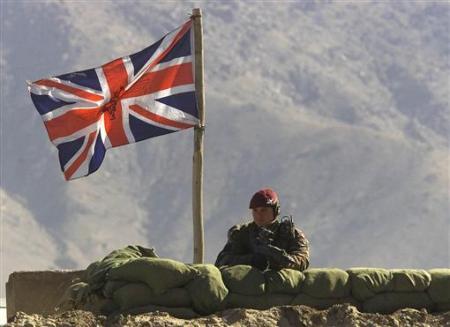MoD To Update War Simulations For ‘Call Of Duty’ Generation

The MoD has been updating combat simulations to match the quality of the games consoles new recruits have been using at home
The current generation of soldiers, raised on a diet of games such as Call Of Duty: Modern Warfare and Battlefield 3, have forced the Ministry of Defence to improve its own internal combat simulation games.
The MoD’s combat simulations have been found to be too boring and unrealistic causing troops to lose concentration, compared with the latest first person shooter (FPS) games found on many of today’s PCs, Xboxs, and PS3s.
Realistic Combat

A Ministry of Defence (MoD) scientist admitted to the Guardian newspaper that this has resulted in the British military “radically improving” some of its simulated war games to hold the attention of recruits from the Playstation and Xbox generation.
The MoD is said to use a spin-off from a commercial game, known as Virtual Battlespace2, in order to test the reaction of troops when they come under mortar fire from insurgents.Digital combat simulations are reportedly becoming an increasingly important part of training, preparing soldiers for operational duties. These combat simulations are used in conjunction with more physical traditional training exercises, but they are proving useful to the military as it faces an ongoing squeeze of its budget.
And it is not just computer simulations that are being refreshed. The Royal Air Force, for example, is mulling over the idea of issuing its trainee pilots with tablets, like the Apple iPad, as part of cost-cutting exercise. The thinking here is that the MoD saves the cost and indeed the weight of printing out bulky flight manuals, said to cost each student £1,000. These manuals also have to be regularly updated. Indeed this is already happening for commercial pilots and even some flight attendants.
Call Of Duty
“Back in the 1980s and 1990s, defence was far out in front in terms of quality of simulation,” said Andrew Poulter the technical team leader of a group of scientists and engineers at the MoD’s Defence Science and Technology Laboratory in Portsdown, Hampshire.
“Military-built simulators were state of the art. But now, for £50, you can buy a commercial game that will be far more realistic than the sorts of tools we were using,” Poulter told the Guardian. “The truth is, the total spending on games development across the industry will be greater than spending on defence.”
Poulter reportedly said the military was trying to keep up with the advances, and he is apparently in charge of Project Kite (Knowledge Information Test Environment), which has been given the task of putting the MoD back in the forefront of simulation training, in part by buying-in technology from the big gaming companies.
“Certainly, there is a level of computer games experience in recruits. So the plots have to be realistic and the images generated have to be high quality. A lot of the older systems can be very clunky,” Poulter reportedly said. “If you put someone behind a block display, it is harder for them to be completely immersed.”
Poulter cautioned that, while games such as Call of Duty: Modern Warfare do look “graphically beautiful”, they tend to be “entertaining rather than realistic”.
Credible Action
Poulter told the Guardian that he and his team are customising the software so the weapons perform as they would in combat.
“The weapons need to be credible. If they fire a rifle and the bullet travels three and a half miles, then that is not right,” he said. “If they are steering a vehicle, then that has to be right too. Realism is more important than entertainment. Levels of immersion are very important.”
Poulter told the Guardian that he was told by a military commander returning from Afghanistan that the Virtual Battlespace2 combat training had saved the lives of two soldiers in his unit after they had come under enemy fire.
“It has been invaluable. It is being taken seriously. It’s not just a game,” Poulter said.